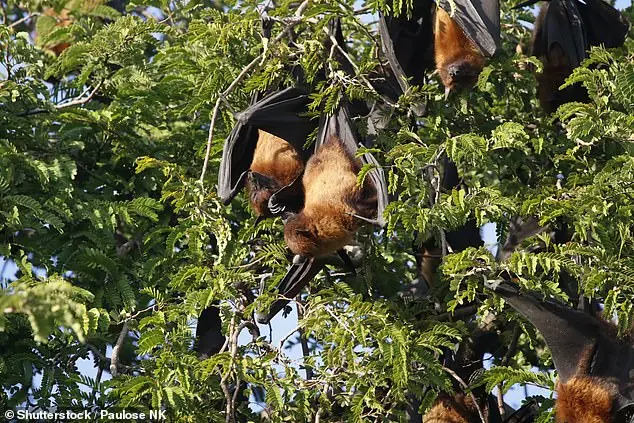
US: New dangerous virus discovered, raising many concerns
Scientists have recently announced that the Camp Hill virus found in shrews in Alabama (USA) has raised concerns that this virus can be transmitted from animal hosts to humans and has the potential to cause a widespread outbreak. Accordingly, the Camp Hill virus belongs to the family of henipaviruses with a high mortality rate. However, this virus has not yet been recorded in humans. The closest virus to Camp Hill that infects humans is Langya - a virus transmitted from shrews to humans in China that causes symptoms such as fever, fatigue, cough, muscle aches, liver dysfunction and kidney damage.

Camp Hill virus found in shrews
“This suggests that there may be transmission from shrews to humans,” said Dr Rhys Parry from the University of Queensland, who confirmed the presence of the virus in the Alabama shrew. “The discovery of henipavirus in North America is significant because it suggests that the virus could spread globally.”
However, the researchers said further research was needed to determine whether the virus posed a threat to humans.

“Henipaviruses have caused severe, sometimes fatal disease in humans and animals in many other areas,” said Dr Parry. “One of the most dangerous Henipaviruses is Hendra, which was first detected in Brisbane, Australia, and has a mortality rate of 70%. In addition, Nipah, which has a mortality rate of 40 to 75%, has been detected in outbreaks in Southeast Asia, including Malaysia and Bangladesh.”
Hendra and Nipah can cause flu-like symptoms and respiratory distress including pneumonia. Hendra can cause severe inflammation of the brain and spinal cord, seizures, confusion and coma. Nipah can also cause seizures, encephalitis, disorientation, confusion and coma within 24 hours.
There is no specific treatment for either virus.

Australian fruit bats are the typical host of Camp Hill virus. Scientists say the discovery of the virus in a North American mammal for the first time could change previous understandings of how the virus spreads, suggesting it has become more widely distributed geographically and evolved to survive in different animals.
The northern short-tailed shrew is commonly found in forests and swamps, typically in southern Canada and the eastern and central United States. Much of its habitat overlaps with that of humans, facilitating its spread.
The researchers said they discovered the virus in shrews in 2021, although they only published their report this week. The virus has never been found in animals other than bats and has never infected humans.
Camp Hill virus is primarily found in the kidneys of shrews, suggesting it would attack similar organs in humans. Co-researcher Dr Ariel Isaacs said the team would focus on developing vaccines for this family of viruses.
News in the same category


Donald Trump finally reveals Elon Musk's real job in federal government

Won Ji An in Talks to Star With Park Seo Joon in a New K-Drama

Ryan Reynolds 'distanced' himself from Blake Lively and 'minimised' her experience with SNL50 joke about Justin Baldoni

Toronto plane cr.ash investigators reveal new details of moment Delta flight fl.ipp.ed as passenger describes esc.ape

Chose a vacation over a washing machine?!

67,000 usd in gold found hidden inside a blender

Reason Taylor Swift was booed at Super Bowl as fans 'spot three-word comment' she fired back

Musk-led group makes $97.4 billion bid for control of OpenAI

Research from Spain shows that microplastic particles in tea bags can affect users' health

Mother-in-law sneaked in and did something shocking

Alaska plane is found with all ten people on board d.e.a.d

US judge temporarily blocks transfer of incarcerated trans women to men’s prisons

Woman who received pig kidney transplant

Warns against self-injecting beauty fillers at home

US: New dangerous virus discovered, raising many concerns

US: New dangerous virus discovered, raising many concerns

Trump orders US to withdraw from UN's top human rights b.o.dy, halt funding for Palestinian ref.ugees

Kanye West's cr.e.epy commands to Bianca Censori at Grammys revealed as fe.a.rs grow over in.dec.ent ex.po.sure st.u.nt
News Post

Avoid These 4 Types of Bananas When Buying—Even Sellers Won't Eat Them!

At 73 Years Old, I Regenerated My Fatty Liver, Ended Joint Pain

My lover said that he understood me well after several years together

If bitten by a poisonous snake, is it safe to suck on the wound with your mouth?

3 types of food should be taken into the body to help sleep better at night

Say Goodbye to Pills: Chayote and Lemon Mixture for Knee Pain, Swollen Feet, High Blood Pressure, and More!

This garlic, lemon, and apple cider vinegar drink is a natural remedy packed with antioxidants and heart-boosting compounds

Russians put frogs in barrels of milk to prevent the milk from spoiling quickly when exposed to air

Would you get a brain implant from Elon Musk's company?

S.h.o.ck.in.g secrets about flight attendant recruitment more than 70 years ago

After 40 years old, if you often see 6 symptoms when sleeping

7 types of acupuncture to effectively treat back p a i n

Rosemary for Hair Regrowth: Transform Your Shampoo

Yeast & Coffee Erase All Wrinkles in 3 Minutes – Even at 70!

Unveiling the Green Marvel: The Top 10 Health Benefits of Common Mallow Leaves

7 foods contain a lot of salt, the more you eat, the more likely you are to get k i d n e y failure and high b l o o d pressure

Adding olive oil to your diet may reduce your risk of brain disease

Surprising benefits of combining olive oil with milk

If your phone falls into water, do this immediately. Never dry it with a hair dryer
